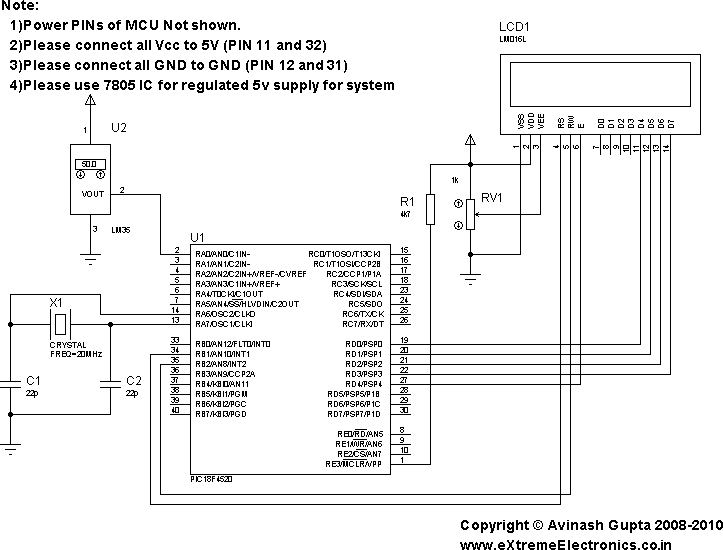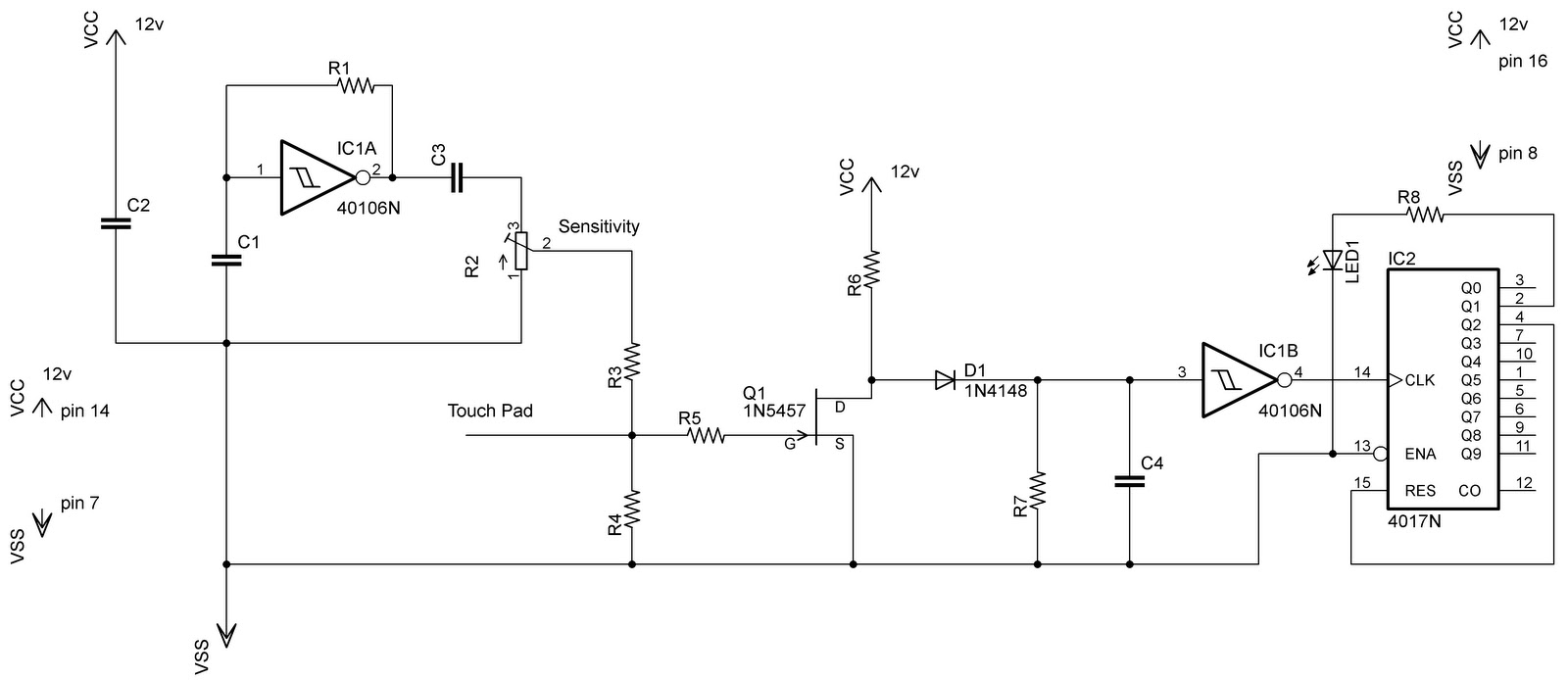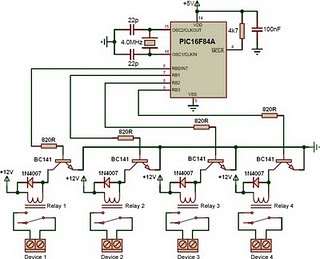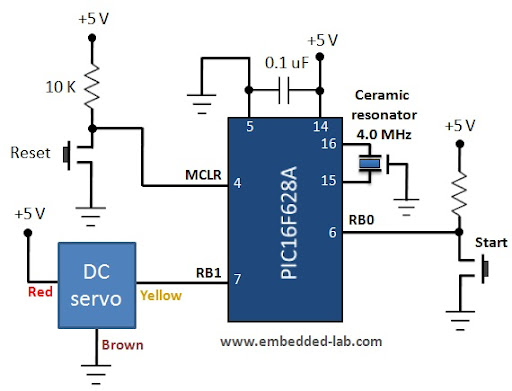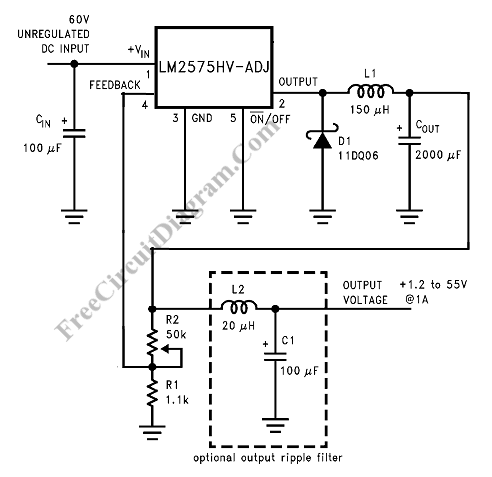
Infra Red Switch remote control
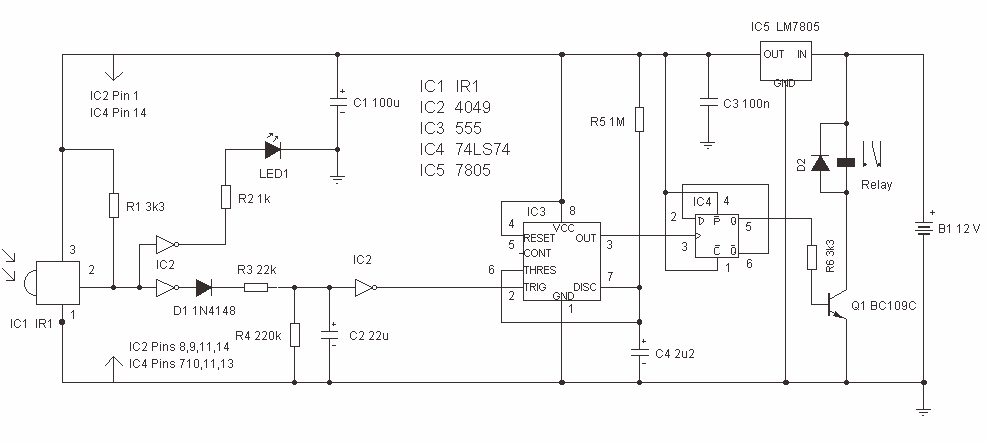
This is a single channel (on / off) universal switch that may be used with any Infra Red remote control using 36-38kHz. (This is a very common remote handset frequency). Any "button" of any remote control may be used to work this universal switch. The button must be pressed for about one and a half seconds (determined by R3 and C2) before the relay will operate. The circuit will remain in this state (latched) until reset. To reset, any button is pressed on the remote handset and held for a short duration. More: The pulses are further buffered and contain "jaggered edges" as shown above. These edges are produced by the modulated IR data, and have to be removed. This is achieved using a 555 timer wired as a monostable, IC3, having an output pulse duration.
The described circuit functions as a universal switch that can be controlled via any standard Infrared (IR) remote control operating within the frequency range of 36-38 kHz. The primary component of this system is a relay that serves to switch an external load on or off based on the received IR signals. The operation is initiated by pressing any button on the remote control for a duration of approximately 1.5 seconds, a timing determined by the resistor R3 and capacitor C2 in the circuit.
Once activated, the relay latches in the 'on' position, maintaining the state until a reset command is received. The reset is accomplished by pressing and holding any button on the remote control for a brief period, which allows the circuit to return to its initial state.
The IR receiver in the circuit detects the modulated signals from the remote control. However, these signals often contain jagged edges due to the nature of the modulated IR data. To ensure reliable operation, these jagged edges need to be smoothed out. This is achieved through the use of a 555 timer configured in monostable mode (IC3). The monostable configuration allows the circuit to generate a clean, stable output pulse of a specific duration whenever it receives an appropriate trigger signal from the IR receiver.
The output duration of the 555 timer can be adjusted based on the component values selected for R3 and C2, ensuring that the timing is optimal for the relay operation. This design allows for flexibility in the choice of remote control buttons, enabling the universal switch to be tailored to various applications while ensuring reliable and consistent performance.This is a single channel (on / off) universal switch that may be used with any Infra Red remote control using 36-38kHz. (This is a very common remote handset frequency). Any "button" of any remote control may be used to work this universal switch. The button must be pressed for about one and a half seconds (determined by R3 and C2) before the relay will operate.
The circuit will remain in this state (latched) until reset. To reset, any button is pressed on the remote handset and held for a short duration. The pulses are further buffered and contain "jaggered edges" as shown above. These edges are produced by the modulated IR data, and have to be removed. This is achieved using a 555 timer wired as a monostable, IC3, having an output pulse duratio 🔗 External reference
The described circuit functions as a universal switch that can be controlled via any standard Infrared (IR) remote control operating within the frequency range of 36-38 kHz. The primary component of this system is a relay that serves to switch an external load on or off based on the received IR signals. The operation is initiated by pressing any button on the remote control for a duration of approximately 1.5 seconds, a timing determined by the resistor R3 and capacitor C2 in the circuit.
Once activated, the relay latches in the 'on' position, maintaining the state until a reset command is received. The reset is accomplished by pressing and holding any button on the remote control for a brief period, which allows the circuit to return to its initial state.
The IR receiver in the circuit detects the modulated signals from the remote control. However, these signals often contain jagged edges due to the nature of the modulated IR data. To ensure reliable operation, these jagged edges need to be smoothed out. This is achieved through the use of a 555 timer configured in monostable mode (IC3). The monostable configuration allows the circuit to generate a clean, stable output pulse of a specific duration whenever it receives an appropriate trigger signal from the IR receiver.
The output duration of the 555 timer can be adjusted based on the component values selected for R3 and C2, ensuring that the timing is optimal for the relay operation. This design allows for flexibility in the choice of remote control buttons, enabling the universal switch to be tailored to various applications while ensuring reliable and consistent performance.This is a single channel (on / off) universal switch that may be used with any Infra Red remote control using 36-38kHz. (This is a very common remote handset frequency). Any "button" of any remote control may be used to work this universal switch. The button must be pressed for about one and a half seconds (determined by R3 and C2) before the relay will operate.
The circuit will remain in this state (latched) until reset. To reset, any button is pressed on the remote handset and held for a short duration. The pulses are further buffered and contain "jaggered edges" as shown above. These edges are produced by the modulated IR data, and have to be removed. This is achieved using a 555 timer wired as a monostable, IC3, having an output pulse duratio 🔗 External reference
